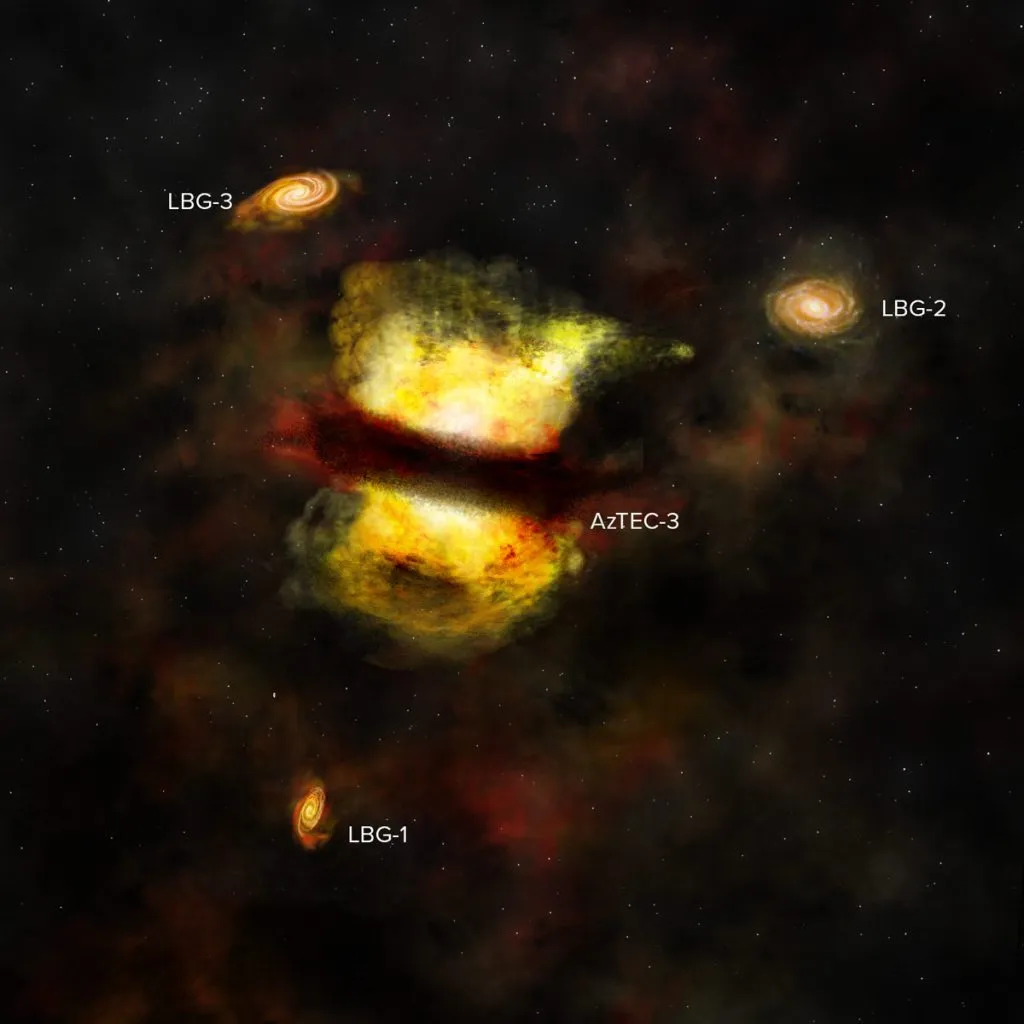In the realm of energy journalism, it’s crucial to stay abreast of scientific research that could potentially impact the energy sector. A recent study, led by Chukwuebuka J. Ugwua and colleagues from the University of Nigeria, Nsukka, has delved into the gas distribution and dynamics in a massive proto-cluster, G358.46-0.39, using the Atacama Large Millimeter/submillimeter Array (ALMA) data. The research, published in the Astrophysical Journal, offers insights that could be relevant to the energy industry, particularly in the realm of astrophysics and energy generation from stellar processes.
The study focused on the spatial distribution of various molecules, including C17O, SiO, HC3N, and SO2, as well as the energetics of outflows in the G358.46-0.39 proto-cluster. This proto-cluster is known to consist of four dust continuum cores, named MM1a, MM1b, MM1c, and MM2. The researchers found that the integrated intensity map of C17O revealed filamentary and dumbbell-shaped structures, likely compressed gases from the expansion of the HII region MM2.
The SiO emission uncovered spatially overlapped blue and red outflow lobes, likely driven by an unresolved young stellar object (YSO) in MM1a. The spatial distribution of HC3N and SO2 molecules in MM1a showed a compact morphology, with no detectable emissions in the other cores. The SO2 emission revealed a clear velocity gradient in MM1a, as well as large velocity dispersion within the inner core of MM1a, consistent with rotating structures.
The researchers estimated various outflow parameters, including mass, momentum, and energy outflow rate. Interestingly, the SiO outflow exhibited a different morphology compared to the previously observed 12CO outflow in MM1a. This discrepancy suggests that the SiO and 12CO outflows are likely associated with disks of separate cores, one face-on and the other edge-on, pointing to multiplicity of YSOs in MM1a.
The properties of MM1a indicate that it is a massive protostar that is actively accreting and undergoing star formation. This research provides a deeper understanding of the protostellar nature, gas kinematics, and dynamics in massive proto-clusters, which could have implications for the energy sector, particularly in the study of stellar evolution and energy generation from stellar processes. The findings could also contribute to the broader understanding of the universe’s energy dynamics and the processes that drive star formation and evolution.
This article is based on research available at arXiv.

